National parks serve as sanctuaries of natural beauty and history, offering a glimpse into the diverse landscapes that define the United States. From towering mountains and verdant forests to geothermal wonders and deep canyons, these parks preserve the essence of the American wilderness. Each park selected for this list stands out for its unique geological features, biodiversity, recreational opportunities, and the unforgettable experiences it offers visitors. As protectors of natural and cultural resources, national parks invite exploration and foster a deep appreciation for the planet’s irreplaceable treasures.
Contents
Yosemite National Park
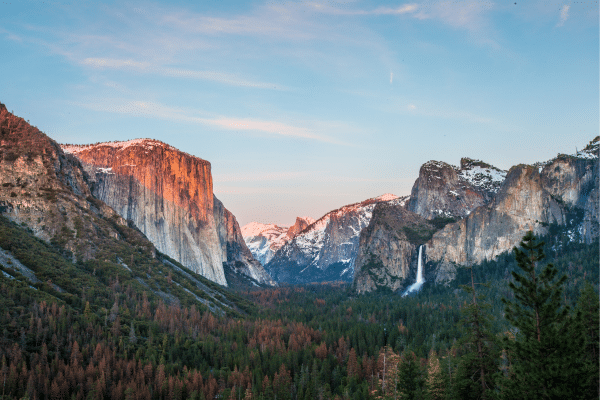
Yosemite National Park, located in the Sierra Nevada mountains of California, is renowned for its breathtaking waterfalls, giant sequoias, vast meadows, and towering cliffs. Iconic landmarks such as El Capitan and Half Dome draw millions of visitors each year, eager to witness the sheer majesty of these granite formations. The park plays a crucial role in conservation, serving as a habitat for diverse wildlife and a research center for scientists studying climate change and ecosystems. Yosemite’s vastness encourages outdoor activities, from hiking and rock climbing to winter sports, making it a year-round destination for nature lovers.
The visitor experience in Yosemite is enhanced by the range of activities available. Trails like the Mist Trail and the John Muir Trail offer immersive hikes through the heart of the park, while scenic drives provide less physically demanding ways to enjoy the stunning landscapes. Seasonal changes transform the park, with spring bringing gushing waterfalls and wildflowers, and autumn offering a palette of colors. Facilities such as campgrounds, visitor centers, and educational programs help guests navigate the park safely and responsibly. Yosemite’s commitment to preserving its natural beauty while accommodating visitors exemplifies the balance national parks strive to achieve.
Yellowstone National Park
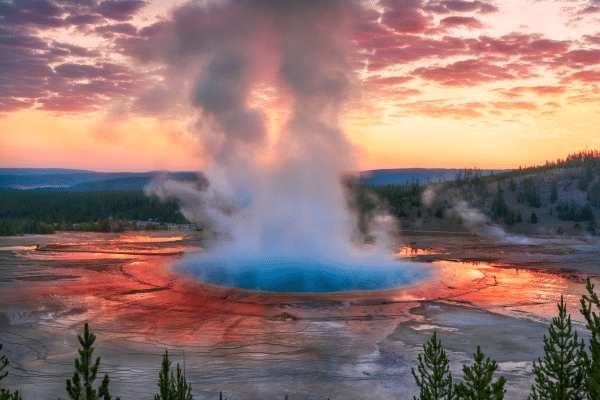
Yellowstone National Park, spanning Wyoming, Montana, and Idaho, holds the distinction of being the first national park in the world. Established in 1872, it is a vast wilderness home to the largest concentration of geysers, including the iconic Old Faithful, as well as hundreds of hot springs and mud pots. This geothermal activity is a vivid demonstration of Earth’s volcanic forces at work. The park also boasts a remarkable variety of wildlife, from herds of bison roaming the grasslands to elusive wolves and grizzly bears. Yellowstone’s landscapes offer a window into the past, preserving the essence of the American West.
Beyond its geothermal features, Yellowstone National Park is a haven for outdoor enthusiasts. With over 900 miles of trails, visitors can embark on hikes ranging from leisurely walks around geyser basins to challenging backcountry adventures. The park’s rivers and lakes offer opportunities for fishing, kayaking, and even scenic boat tours. Winter transforms the park into a snowy playground, with cross-country skiing, snowshoeing, and snowmobiling. Yellowstone’s commitment to education and conservation is evident through its visitor centers, guided tours, and conservation programs, ensuring the park’s wonders will continue to inspire future generations.
Grand Canyon National Park
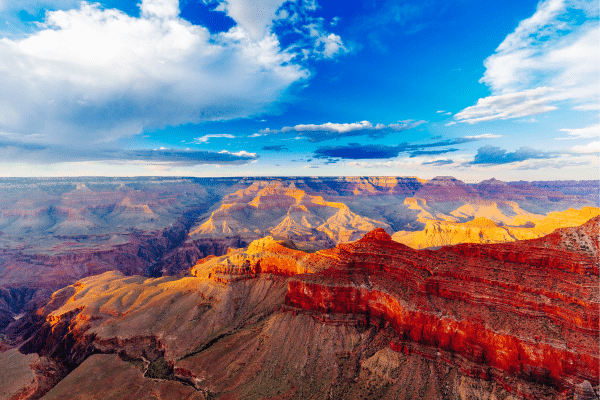
Grand Canyon National Park, located in Arizona, is a testament to the power of natural forces. Carved by the Colorado River over millions of years, the canyon stretches over 277 miles, reaching depths of over a mile. The layers of rock exposed by the canyon’s walls tell a story of Earth’s geological history, making it a significant site for scientific research. The Grand Canyon’s vast scale and dramatic vistas offer an unparalleled sense of awe and wonder. Each viewpoint along the rim provides a new perspective, revealing the intricate patterns, colors, and shadows that change with the light of day.
Exploring the Grand Canyon offers a range of experiences, from rim walks that offer easy access to breathtaking views to strenuous hikes into the canyon’s depths. The South Rim, open year-round, is the most accessible and popular area, while the North Rim provides a more secluded experience. Rafting trips on the Colorado River offer a unique vantage point from within the canyon, showcasing its grandeur from a different perspective. The park’s facilities, including lodges, campgrounds, and educational programs, cater to visitors’ needs, ensuring a memorable and safe visit. The Grand Canyon inspires a deep appreciation for nature’s artistry and the importance of preserving such wonders for generations to come.
Glacier National Park
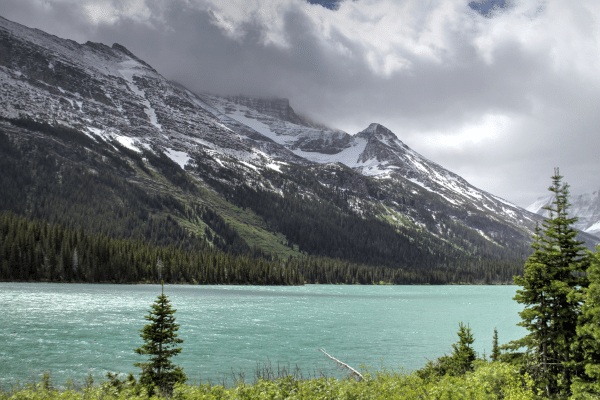
Glacier National Park, located in Montana’s Rocky Mountains, is often referred to as the “Crown of the Continent.” Its landscape is shaped by glaciers, which, although receding, have left behind a legacy of sharp peaks, U-shaped valleys, and crystal-clear lakes. The park is home to over 700 miles of trails, making it a hiker’s paradise. Visitors can explore the backcountry, trek to glaciers, and enjoy panoramic views from the park’s many overlooks. Glacier’s diverse ecosystems support a wide range of wildlife, including grizzly bears, mountain goats, and lynx, making it a vital area for conservation and study.
The park’s Going-to-the-Sun Road is an engineering marvel that offers one of the most scenic drives in America. This road winds through the heart of the park, showcasing stunning vistas and providing access to numerous hiking trails and viewpoints. Apart from hiking, Glacier National Park offers opportunities for fishing, boating, and winter sports like cross-country skiing and snowshoeing. The park’s efforts to educate visitors about the impacts of climate change on its glaciers highlight the importance of environmental stewardship. Despite the challenges posed by nature and human activity, Glacier National Park remains a symbol of natural beauty and resilience.
Rocky Mountain National Park
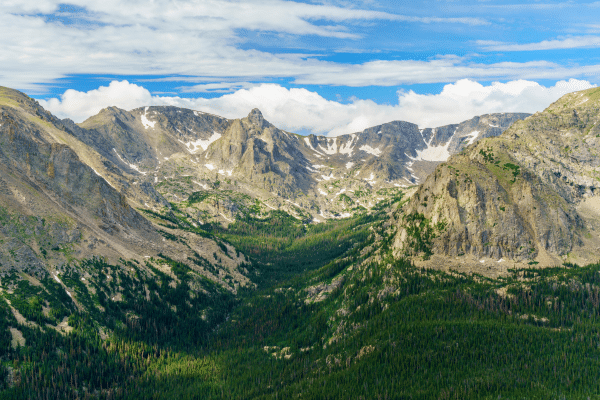
Rocky Mountain National Park in Colorado spans the Continental Divide, offering a landscape of majestic mountains, alpine lakes, and meadows. The park’s elevation ranges from 7,500 to over 12,000 feet, encompassing a variety of ecosystems from montane forests to alpine tundra. These diverse habitats are home to an array of wildlife, including elk, bighorn sheep, and moose. Over 300 miles of trails invite visitors to explore the park’s natural wonders, whether they seek gentle hikes around tranquil lakes or challenging treks up rugged peaks. The park’s scenic drives, like Trail Ridge Road, provide stunning views and access to high-altitude environments.
Rocky Mountain National Park offers year-round activities, with each season bringing its own charm. Summer allows for backpacking, bird watching, and wildflower viewing, while fall colors transform the landscape into a vibrant palette. Winter covers the park in snow, creating a peaceful setting for snowshoeing and skiing. Educational programs and guided tours help visitors learn about the park’s ecosystems, geology, and history. With its combination of accessible trails and remote wilderness, Rocky Mountain National Park is a place where visitors can connect with nature at their own pace.
Zion National Park
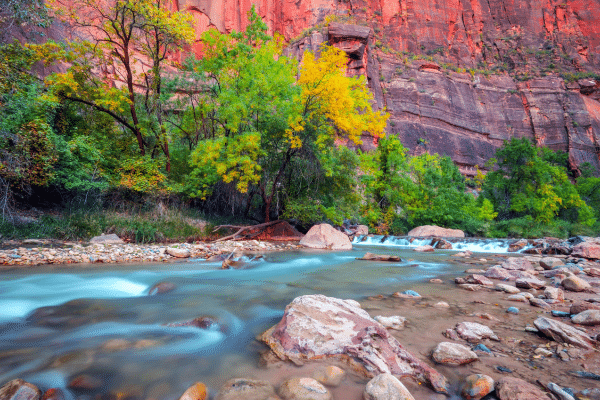
Zion National Park, nestled in the heart of Utah’s red rock country, offers visitors a blend of tranquility and adventure. Its stunning sandstone cliffs, ranging in color from cream to deep red, tower above the Virgin River, creating a picturesque landscape that captivates all who visit. The park’s unique geography has created a variety of habitats, supporting diverse flora and fauna. Hiking trails like The Narrows, where visitors wade through river canyons, and Angel’s Landing, known for its breathtaking views, provide unforgettable experiences. Zion’s beauty extends beyond its cliffs and canyons to include serene meadows and forested plateaus.
The park not only offers a retreat for those seeking peace but also challenges for adventure enthusiasts. With over 90 miles of trails, visitors can find paths ranging from easy walks to strenuous treks that test their limits. Rock climbing in Zion is a popular activity, with the park’s towering walls offering routes for all skill levels. Seasonal changes bring new dimensions to the park, with spring wildflowers, autumn leaves, and occasional winter snows adding to its beauty. Facilities within Zion, including campgrounds, shuttle services, and visitor centers, ensure that the park remains accessible and enjoyable for all.
Olympic National Park
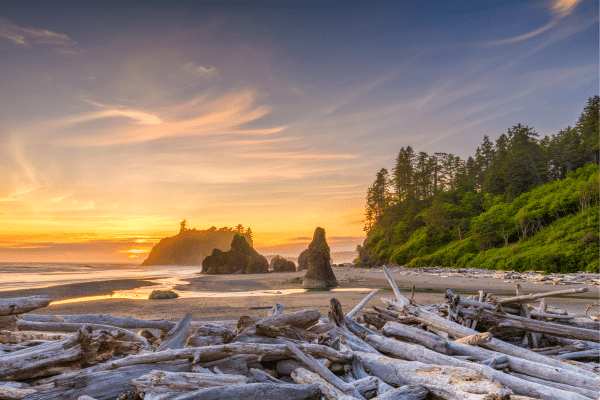
Olympic National Park, located in Washington State, is a testament to the Pacific Northwest’s stunning diversity. This vast park encompasses nearly a million acres, featuring rugged coastline, temperate rainforests, and mountain peaks. The Hoh Rainforest, one of the park’s prime attractions, is an enchanting world of moss-draped trees and lush vegetation, offering a glimpse into ancient ecosystems. The park’s coastline provides opportunities for tidepool exploration and beach walks, while its mountains challenge climbers and hikers alike. Olympic’s isolation and varied environments make it a haven for endemic species and a hotspot for biodiversity.
Visitors to Olympic National Park can immerse themselves in its quiet beauty and wildness. The park’s extensive trail system allows for exploration of its varied landscapes, from the solitude of alpine ridges to the tranquility of rainforest valleys. Camping in Olympic offers a chance to disconnect from the modern world and reconnect with nature. The park’s commitment to preservation ensures that its pristine environments remain untouched, offering a sanctuary for both wildlife and humans. Through its educational programs, Olympic National Park fosters an appreciation for the importance of conservation and the role of protected areas in sustaining biodiversity.
The Bottom Line
National parks are more than just outdoor destinations; they are a legacy left for future generations to cherish and protect. Each park highlighted offers a unique experience, from the granite cliffs of Yosemite to the diverse ecosystems of Olympic. These parks not only preserve the natural and cultural heritage of the United States but also serve as classrooms and sanctuaries where people can learn about and connect with the natural world. By visiting these national treasures, individuals gain a deeper appreciation for the planet’s beauty and the critical importance of environmental stewardship. As stewards of these lands, it is the collective responsibility to ensure they remain unspoiled for centuries to come, allowing future generations to experience the awe and wonder of America’s natural landscapes.


